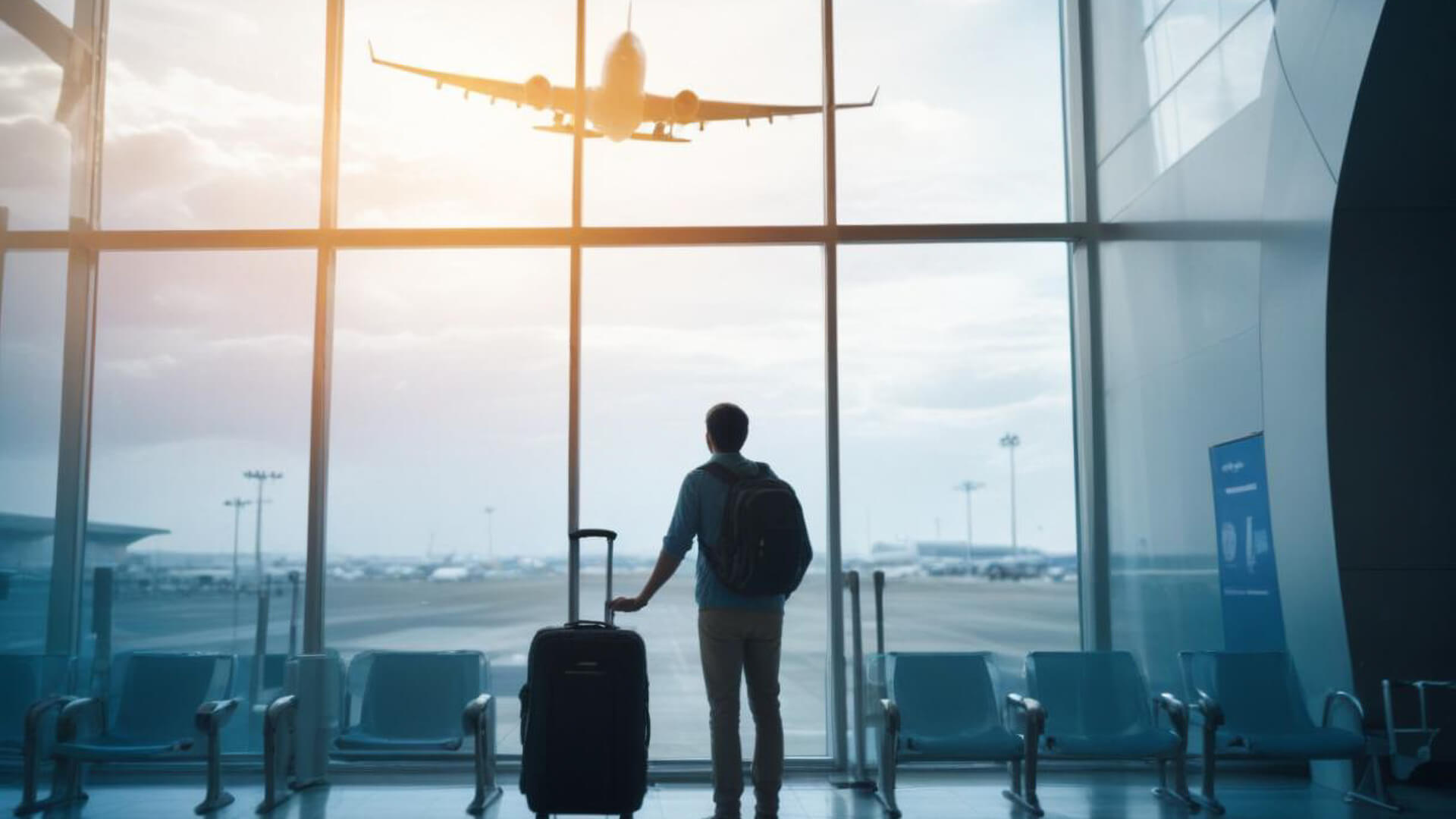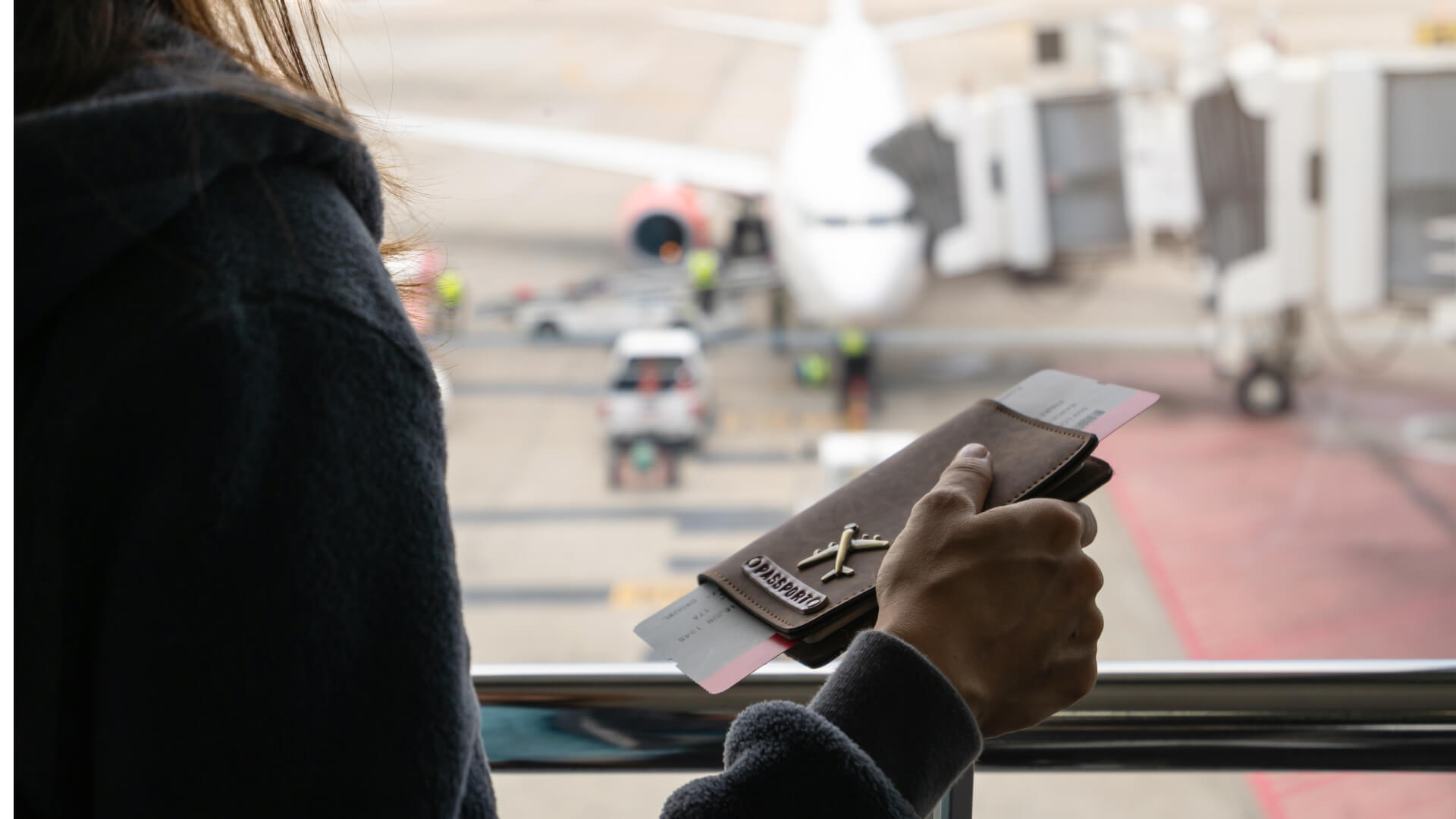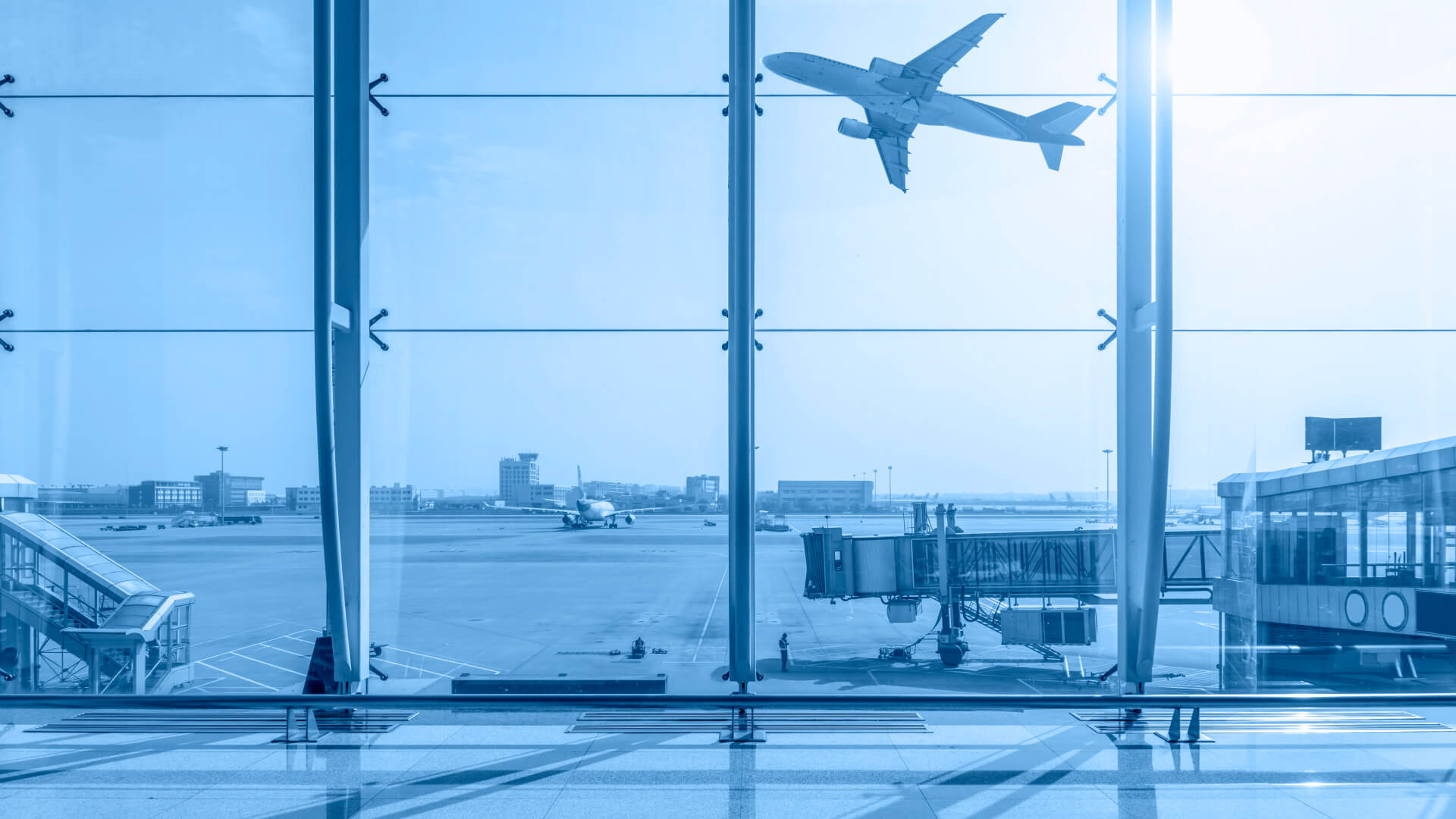From workforce flexibility to smart outsourcing, our latest whitepaper shows how Simply Contact helps CX teams stay ready—season after season.

Customer experience influences business success across industries, directly impacting loyalty, retention, and the company's reputation. Airlines with the best customer service constantly work on CX improvement to remain ahead of the competition. According to the research, 10% of customers willingly pay more for airline tickets, and 63% are ready to share their personal information if it guarantees great service and a more personalized experience.
Simply Contact invites you to discover the secrets of creating an outstanding passenger experience. Our experts will share up-to-date strategies and review the core elements of a high-impact CX. Here, you will get more information about modern tools and improvement methods, including tips on building an effective master plan. With this guide for the travel industry, you will see what works now and what to expect from future trends.
Why passenger experience matters
Airline customer service is the key to passenger loyalty, as people are more likely to travel again with the brand that created a positive impression from the flight. A single bad experience may make customers think about switching brands, but with effective customer service, there’s still a chance to fix it and strengthen connections with travelers. Knowing that the company has their backs in problematic situations means more than lacking issues.
Customers who are happy with their passenger journey can spread the word, recommending the airline company to their friends and families and sharing positive feedback on social media. It helps build a strong and positive brand image, demonstrating that the airline is a reliable and trustworthy travel choice. As a result, it creates a competitive advantage, driving the company to the top of the industry.
The rise in travelers seeking reputable service providers directly affects potential revenue. A positive environment also stimulates passengers to spend more on additional services like dining and local retail in the airports. One positive impression can serve as a foundation for continuous service use and, as a result, long-term success.
What is a passenger experience strategy?

Experience strategy, also known as PX (passenger experience) strategy, is a complex plan for journey optimization. The main goal is to enhance positive traveler impressions at every touchpoint. It covers everything from initial booking to airport leaving, including possible lost baggage problems.
We have developed three principles of effective PX strategy based on our experience as an outsourcing customer service provider.
Service delivery needs to be aligned with customer expectations
Knowing passengers is essential, as it helps to understand what they may expect from airline services and what they need to make the journey perfect for them. For instance, an American West Coast airport provides travelers access to yoga rooms for relaxing between flights. Munich Airport trains employees to identify and address the special needs of passengers with neurodivergent disabilities.
A passenger journey requires convenience at every touchpoint
The experience starts before boarding and continues after arrival: each step matters and needs to be tailored to excellence with streamlined operation and functional convenience. For instance, the pre-travel experience is formed based on how easily passengers can book tickets through the website or application, while also preparing essential connectivity via such platforms as Simify. It involves accessible communication and getting all the required information without struggle.
During travel, passengers expect easy check-ins and high-quality onboarding service. It includes physical comfort and responsive staff behavior. For a good post-travel impression, we recommend providing customers with easy baggage claim service and ground transportation to enhance the journey's comfort. Follow-up communication and feedback handling are also important to measure the flight's success and see if the customers are satisfied with their journey.
Airline passenger experience requires collaboration
Collaboration across departments and partners is vital for proper airline functionality, as each team ensures the effectiveness of the specific part of the service. It's a huge system where marketing attracts new customers, frontline staff work on their satisfaction, and customer service smoothes out any possible sharp angles. External partners, such as airport authorities and transportation services, also impact the overall experience and must be considered in the plan.
Discover how top airlines manage volume spikes, avoid overstaffing, and keep service levels high—even under pressure.
Download the whitepaper
Core elements of a high-impact passenger experience
If you wonder how to improve the passenger experience in an airport, you need to understand that improvement is a complex strategy that includes several core elements to work with. Let's look closer at factors that have a high impact on PX.
Seamless check-in and security
Speed and security are equally important for a positive impression from an airline company, so consider keeping both as quick and convenient as possible. For instance, self-service options and online check-ins can minimize the crowding near airport counters and streamline the process.
Integration of biometric technologies can also accelerate the effective application of security measures. For example, fingerprint scanning and facial recognition enhance security and simplify security checks.
Effective communication and clear information access
Information accessibility also affects passenger comfort and confidence in your service. Travelers require available data about flights and possible delays, which airports can provide through information displays and multilingual support.
Mobile applications with personalized notification features can simplify airport navigation and keep users informed about any news, from flight times to gate changes. AI-powered solutions like customer service chatbots and virtual assistants may provide additional information and support in answering basic questions.
Upgraded infrastructure amenities
Infrastructure convenience is equally important to onboard services, so remember that a passenger-friendly airport environment can attract more travelers and help to make existing ones loyal. Charging stations and a good Wi-Fi connection will make the flight wait more productive and relaxing. High-quality food and lounges for relaxation can also give travelers a place to unwind between flights.
Consistent and helpful customer service
Well-trained and motivated staff can make every interaction feel respectful and empathetic. With a friendly and caring attitude, customers will always feel heard and valued. Employees empowered to solve passengers' problems can provide faster assistance without additional confirmation from supervisors.
Accessibility by design
Travel should be available and inclusive for all passengers, regardless of age, physical ability, or language. Airports with wheelchair access, ramps, and elevators will be more comfortable for people with limited abilities and older age groups. Language accessibility tools enhance understanding and passengers' control over situations.
If you make equality your brand value, a truly inclusive experience goes beyond meeting the minimum legal standards. Universal design can help create spaces and services for people with all types of abilities, and involving people with disabilities in the planning process will ensure that no one feels excluded.
For instance, audio and visual announcements with high-contrast, readable fonts are useful for informing passengers about changes. You may also consider special requests in booking systems to ensure that passengers receive all required assistance.
Health, safety, and sustainability practices
Modern passengers care deeply about safety and the planet, and they expect airline companies to consider these factors. A clean and sanitized environment and an internal policy focused on energy efficiency and other green initiatives can create a positive impression of the company. It may include reduced single-use plastics and similar eco-conscious choices.
How to improve passenger experience in the airport: The role of technology

Modern technologies enable smart time use and reduce crowding in airport zones. We have prepared a list of the most valuable solutions to consider.
Self-service kiosks
If passengers can check in via self-service kiosks, they will have full control over their travel. The advanced terminals enable travelers to print boarding passes and tag baggage without additional assistance from airline staff.
Ticket dispensing automation
With ticket-dispensing machines, travelers can buy and collect tickets without visiting airport counters. They enable passengers to proceed through the airline facilities with minimal time requirements and reduce the workload for airport staff.
Queue management systems
Digital queue management solutions can send passengers real-time updates about their waiting times and the current number in the queue. Automated notifications will reduce physical queues and keep travelers informed, reducing anxiety and confusion.
Mobile apps and real-time updates
Mobile applications make all information available and within hand's reach. For instance, passengers can book tickets there without visiting the airport and check flight status or possible delays.
How to improve the airline passenger experience: Tools and methods

There are many ways to improve customer experience in the airline industry, but for now, we invite you to review three of the most useful upgrade directions.
Passenger journey mapping
A customer journey map enables fast and effective identification of all passengers' touchpoints. It detects all interactions between airline services and travelers. Such an approach gives valuable insight into overall effectiveness and highlights areas for improvement.
CX methodologies and service design
CX methodologies like journey maps and NPS (net promoter score) enable a better understanding of travelers' preferences and expectations. Airlines can upgrade services for better customer satisfaction by listening to customers' wishes. For instance, American Airlines offers pre-ordering menus to tailor food choices according to passenger preferences.
Ongoing research and feedback collection
Listening to passengers' feedback is crucial for those who care about delivering outstanding service quality. You can apply surveys and interviews to see how well the existing system works and what the company lacks to attract more customers. Social listening and observation studies can help form the plan based on current demand.
Building your experience master plan
The experience master plan is a blueprint for an effective, high-impact passenger journey. It is not about simple fixes of pain points; it's about tailoring the experiences to make travelers feel valued.
Start with the most important one: define your vision. Here, you must decide what your passenger experience should look and feel like. Is it something premium or highly personalized? Are you aiming for emotions or comfort?
A cross-functional approach is always a great choice, and involving all key teams from the start will help you review the plan from all sides. For example, IT teams are responsible for technologies, while customer service is closely familiar with usual complaints and customer wishes.
Collecting travelers' input via surveys and feedback loops enables examining the services from the customers' point of view. When they see that feedback leads to upgrades, loyalty grows.
One-time fixes sound simpler, but long-term consistency creates a high-quality service. Sustainable improvements that can scale and adapt will serve longer and build more trust in the company and its services.
Future trends in airport passenger experience
At Simply Contact, we believe that airline PX will become more tailored and personalized. With AI-driven service augmentation, airline companies can analyze behavior and preference patterns to create more targeted services.
Biometrics have every chance to become more widespread in the airline industry, simplifying security checks and saving time for passengers and airport staff.
Predictive service based on behavior patterns will enable more accurate forecasts of potential growing demand and help airlines to match it without any struggles.
With rising concern about the planet's state, green and sustainable travel expectations will grow accordingly. To create a positive airport passenger experience, companies will adjust their policies to match. It will lead to more green initiatives, including smarter energy use and recycling strategies.
Conclusions
The travel industry is constantly growing, and investments in passenger experience tailoring are an effective strategy to attract new customers and strengthen the loyalty of existing ones. When travelers feel heard, valued, and supported, and their expectations align with service delivery, they know that they can fully rely on the airline company in the future. Modern technologies and trained staff will be a solid foundation for creating a positive brand name and strong reputation, which will be one more step toward loyal and happy passengers.
Get fast answers to any remaining questions
Thank you.
Your request has been sent successfully.
Your request has been sent successfully.






